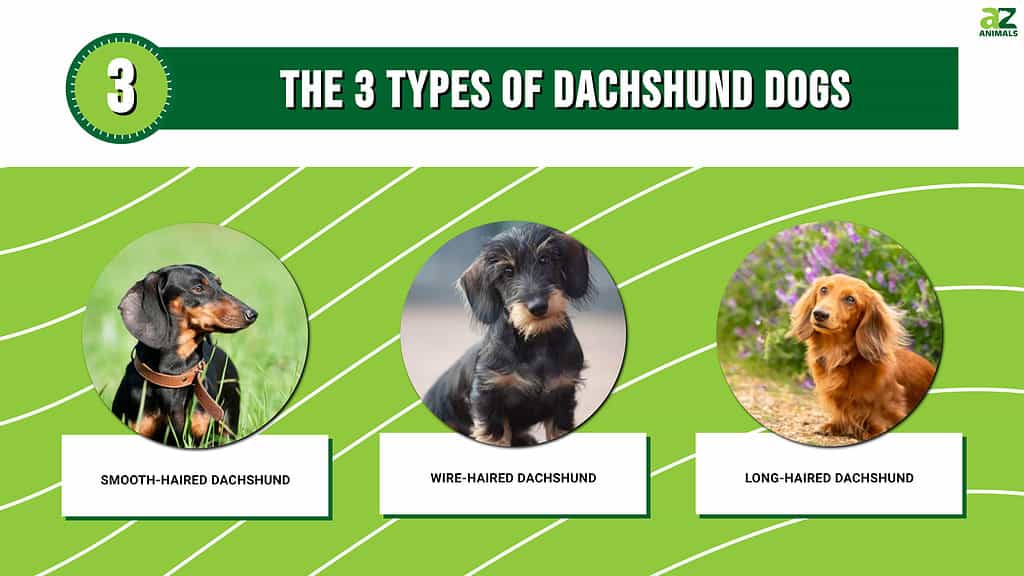
Technically, all dachshunds are the same breed. However, they do come in three different coat types. Some also recognize two different sizes, though. Different breed registries have varying classifications.
The major differences are between the American Kennel Club (AKC) and United Kennel Club (UKC) classifications. We’ll look at the different types of dachshunds below, including differing classifications.
Dachshund Sizes
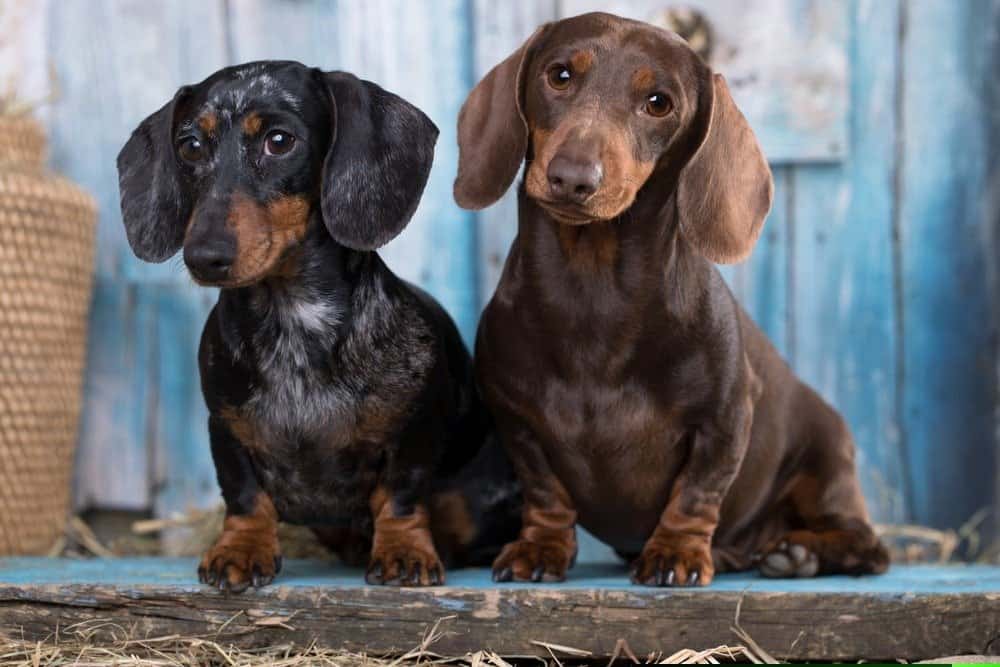
The American Kennel Club only recognizes standard dachshunds, which they consider between the sizes of 16 and 32 pounds.
©Liliya Kulianionak/Shutterstock.com
Dachshunds are pretty small, but they can vary in size quite a bit. Different clubs have different classifications; some don’t have any classifications!
UKC Dachshund Classifications
The UKC recognizes two different sizes, though they have nearly identical sizing ranges.
The “upper” weight range of a dachshund at 25 pounds. Then, dachshunds 11 pounds or less are considered miniature. The ideal weight of a miniature dachshund is 10 pounds.
AKC Dachshund Classifications
The AKC doesn’t distinguish between different sizes. They only recognize standard dachshunds, which they consider between the sizes of 16 and 32 pounds. Other dachshunds are outside of this breed standard and cannot compete.
Federation Cynologique Dachshund Classification
The French kennel club also puts dachshunds into two different sizes, similar to the UKC. Standard dachshunds are between 16 to 32 pounds, and miniature dachshunds are 11 pounds or less.
However, they further divide miniature dachshunds into two groups: the dwarf dachshund and the rabbit dachshund. Rabbit dachshunds are the smaller of the two at less than 7.7 pounds.
Other Classifications
Within the breeder community, there are other terms used to describe dachshund sizes, too. Among these breeders, dogs between 11 and 16 pounds are often called “tweenies.”
Miniature dogs are often those below 11 pounds, and standard dogs are those above 16 pounds.
Exactly what counts as a dachshund varies, and where different groups draw the line varies. There isn’t a widely acceptable size for dachshunds throughout the world, and many kennel clubs recognize dachshunds far smaller than those in America, even if they put them into a different category.
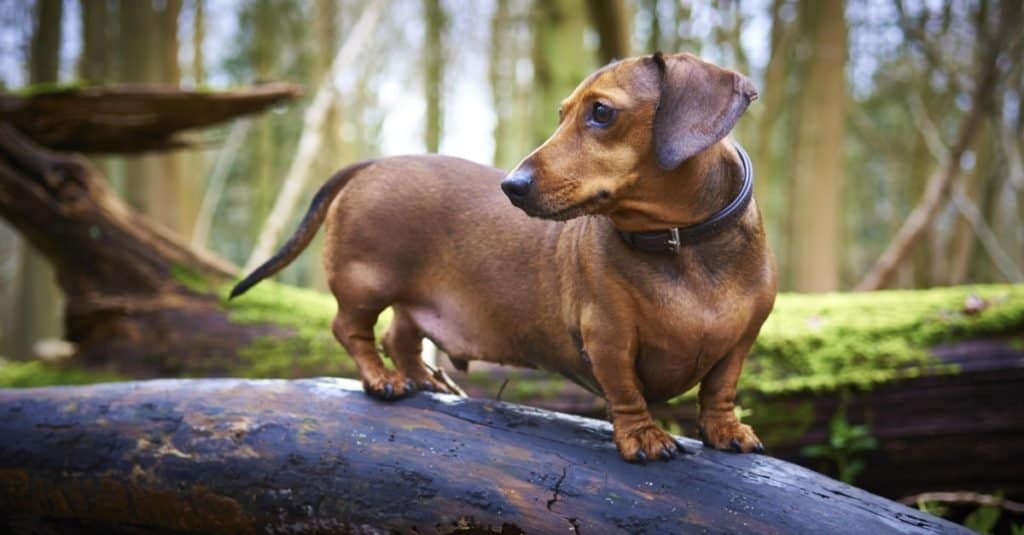
Within the breeder community, dachshunds between 11 and 16 pounds are often called “tweenies.”
©Owen Brown/Shutterstock.com
Dachshund Coats
On top of differing sizes, dachshunds have different types of coats, too. Luckily, the exact distinctions between these dogs aren’t as vague as sizing.
These dachshunds fall into three categories: smooth-haired, wire-haired, and long-haired.
Smooth-Haired Dachshund
Most dachshunds in America have smooth coats. These dogs are commonly called “short-haired” dachshunds because that’s exactly what they are. Because their coats are short, they require very little grooming.
If you imagine a dachshund, this type is probably what you’re thinking of.
These dogs don’t shed much and have pretty easy maintenance requirements.

Most dachshunds in America have smooth coats.
©iStock.com/grase
Wire-Haired Dachshunds
These dachshunds are somewhere between smooth-haired and long-haired. Their fur is medium-length and somewhat rough to the touch. They have the famous “mustache” that makes them look a bit like an old man.
From the distance, they may look a bit like a smooth-haired dachshund. However, their mustache and longer eyebrows set them apart. Often, their owners get them trimmed every few months to keep them looking well-groomed, but this isn’t strictly necessary.
These dogs remind me of Scotties in the face. However, they act just like any other dachshund; their coat doesn’t change their temperament.
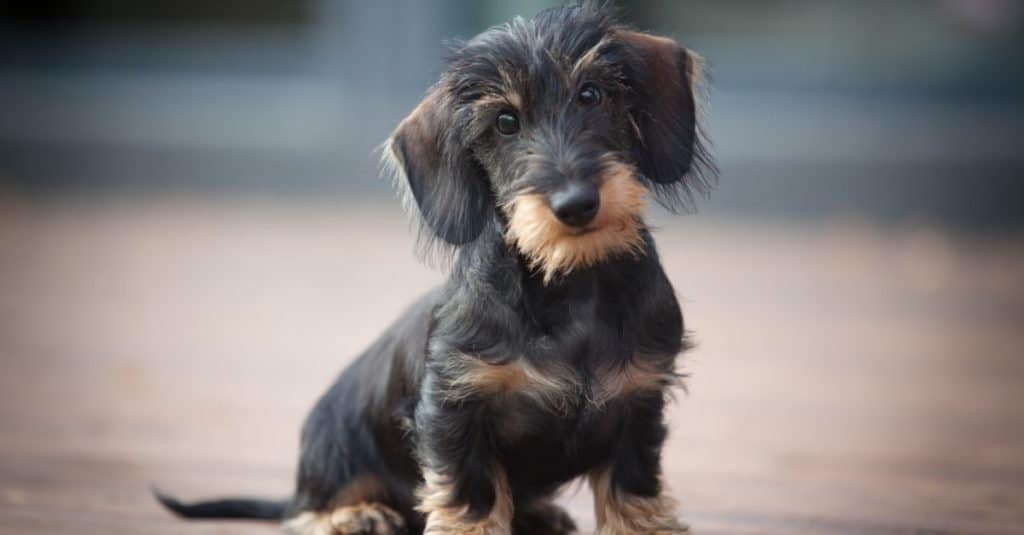
Wire-haired dachshunds have a medium-length coat that is somewhat rough to the touch.
©kallevalkama/Shutterstock.com
Long-Haired Dachshund
As the name suggests, these dachshunds have longer hair than the other two. Their hair isn’t extremely long like a shih tzu or other toy breeds. However, it is silky and flowy, unlike other dachshunds.
Their hair is most noticeably long on their tails, neck, legs, belly, and ears.
Because their fur is longer, they require more frequent brushing and grooming. They don’t need to be trimmed, but you must brush them regularly to prevent matting.
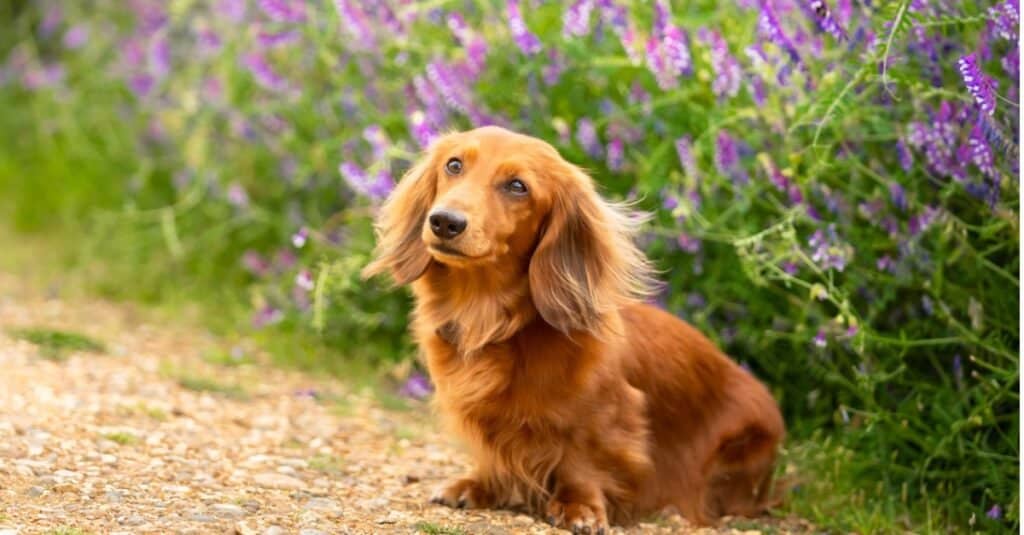
Long-haired dachshunds require more frequent brushing and grooming.
©iStock.com/romitasromala
The photo featured at the top of this post is © Michael E Hall/Shutterstock.com
Ready to discover the top 10 cutest dog breeds in the entire world?
How about the fastest dogs, the largest dogs and those that are -- quite frankly -- just the kindest dogs on the planet? Each day, AZ Animals sends out lists just like this to our thousands of email subscribers. And the best part? It's FREE. Join today by entering your email below.
Thank you for reading! Have some feedback for us? Contact the AZ Animals editorial team.






